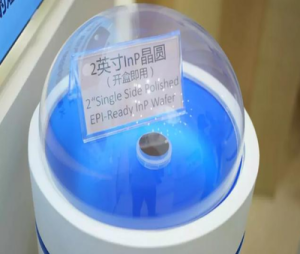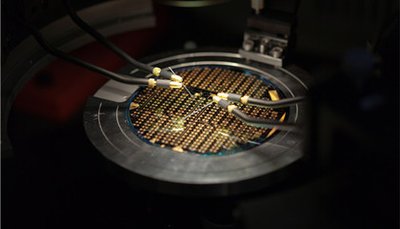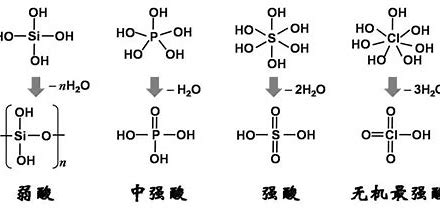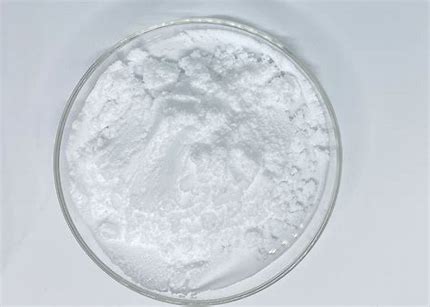Indium Iodide: Properties and Chemical Applications

Indium iodide (InI), specifically recognized as Indium(I) iodide, represents a truly fascinating anomaly within the broader landscape of indium chemistry. While indium is most commonly encountered in its more stable +3 oxidation state, InI distinguishes itself by featuring indium in an unusual and highly reactive +1 oxidation state. This unique valency bestows upon InI a set of distinct and often surprising properties, leading to a diverse and expanding array of chemical applications. From its striking deep red-purple crystalline appearance to its pivotal role in complex organic transformations and its burgeoning potential as a precursor in advanced material synthesis, Indium(I) iodide is a compound that is rapidly gaining significant attention in the vanguard of modern chemical research. This article will meticulously delve into the fundamental properties of InI and comprehensively explore its expanding utility across various cutting-edge chemical applications, highlighting why this seemingly simple binary compound is becoming an increasingly key player in innovative chemical research and development, particularly in the realm of main group chemistry.
Introduction: The Intrigue of Indium(I) Iodide – A Unique Oxidation State
Indium, positioned in Group 13 of the periodic table, is celebrated for its versatility in various technological applications, from transparent conductive electrodes in touchscreens (indium tin oxide, ITO) to low-melting alloys. However, beneath the surface of its conventional uses lies a more intriguing facet: the chemistry of its lower oxidation states. Among these, Indium(I) iodide (InI) stands out.
What makes InI so captivating? It is the fact that indium, an element typically stable in its +3 oxidation state, exists here as In⁺. This low oxidation state imparts a unique set of electronic and steric properties that profoundly influence its reactivity and potential for novel chemical applications. Initially viewed as merely a stable form of a transient intermediate, InI has evolved into a powerful and versatile reagent, driving advancements in organic synthesis, catalysis, and the creation of new advanced materials. This guide aims to systematically unpack the fundamental properties of Indium Iodide (InI) and shed light on its diverse and increasingly important chemical applications, solidifying its significance in contemporary chemical science.
Fundamental Properties of Indium Iodide (InI): Defining its Uniqueness
The distinctive properties of Indium(I) iodide are a direct consequence of its peculiar electronic configuration (a lone pair of electrons on In⁺) and its unique crystal structure.
- Physical Properties:
- Appearance: One of the most striking features of InI is its appearance. It typically presents as a deep red-purple crystalline solid. When finely ground, its color shifts to a more vibrant crimson red. Upon melting (its melt is notably almost black), it remains a dark, conductive liquid.
- Molecular Formula and Weight: Its simple stoichiometric formula is InI, with a molecular weight of 241.72 g/mol.
- Melting Point: InI has a relatively accessible melting point of approximately 351°C (664°F), which facilitates its use in certain high-temperature reactions or as a melt.
- Boiling Point: It boils at around 712°C, allowing for purification by sublimation in certain laboratory setups.
- Density: With a density of 5.32 g/cm³, it is a relatively dense solid.
- Crystal Structure: InI crystallizes in an orthorhombic lattice, a layered structure that contributes to its unique physical and electronic characteristics.
- Solubility: It is generally considered sparingly soluble in water, but its dissolution can be significantly enhanced in iodide-rich solutions where it may form complex ions. It also exhibits slight solubility in some specific organic solvents like pyridine or mixtures containing m-xylene, which is important for its use in non-aqueous synthesis.
- Stability: Indium(I) iodide is relatively stable to air at ordinary temperatures when pure and dry, but it is sensitive to moisture and light. Prolonged exposure to ambient conditions can lead to oxidation or disproportionation. Therefore, it should be kept in a dark place and stored under an inert atmosphere (e.g., nitrogen or argon) at room temperature.
- Chemical Properties (Reactivity Based on +1 Oxidation State): The defining characteristic of InI‘s chemical behavior stems from indium’s +1 oxidation state.
- Reductive Nature: The indium(I) ion (In⁺) possesses two valence electrons beyond a stable noble gas configuration, making it a mild to moderate reducing agent. It readily seeks to lose these electrons to achieve the more stable +3 oxidation state. This inherent reductive capacity is central to its utility in many chemical applications, particularly in organic synthesis.
- Disproportionation Tendency: A key aspect of InI’s reactivity is its tendency to disproportionate under certain conditions. This means it can react with itself to form both indium metal (In⁰, oxidation state 0) and Indium(III) iodide (InI3, oxidation state +3). For example: 3InI→In+2InI3. This behavior highlights the inherent thermodynamic instability of the +1 state relative to the other common oxidation states of indium. Understanding and controlling this disproportionation is crucial for successful synthetic applications.
- Lewis Acidity/Basicity: While its primary reactivity often arises from its redox properties, InI can also exhibit subtle Lewis acid or base characteristics, depending on the reaction environment and the nature of the reactants. Its unique electronic structure allows it to participate in various coordination interactions.
- Reactions with Oxidizing Agents: As a reducing agent, InI readily reacts with strong oxidizing agents, undergoing oxidation to higher indium oxidation states (typically +3).
Synthesis of Indium Iodide (InI): Crafting the Unique Compound
The production of high-purity Indium(I) iodide is crucial for its precise chemical applications. Common synthetic methods typically involve:
- Direct Reaction of Elements: The most straightforward method often involves the direct reaction of elemental indium metal with iodine. This reaction is typically carried out at elevated temperatures in a sealed tube under inert conditions to prevent side reactions and achieve optimal yield. 2In(s)+I2(s)heat
2InI(s)
- Reduction of Indium(III) Iodide: Another common approach involves the reduction of Indium(III) iodide (InI3) using metallic indium or another suitable reducing agent. This method leverages the disproportionation equilibrium to favor InI formation under controlled conditions. 2In(s)+InI3(s)heat
3InI(s)
Key Chemical Applications of Indium Iodide (InI): A Versatile Reagent
The distinctive properties of Indium(I) iodide, particularly its reductive nature and ability to generate highly reactive indium intermediates, have positioned it as a versatile and increasingly vital reagent across numerous chemical applications.
- Catalysis:
- Carbonylation of Methanol to Acetic Acid: This is arguably one of the most industrially significant emerging applications of InI. Indium(I) iodide is proving to be a highly promising catalyst for the carbonylation of methanol to produce acetic acid, a process traditionally dominated by expensive and toxic rhodium-based catalysts (e.g., Monsanto process). InI offers potential advantages in terms of cost-effectiveness, sustainability, and selectivity, aligning well with principles of green chemistry.
- Organic Reactions: Its mild to moderate reductive power makes it exceptionally useful in a wide array of organic synthesis transformations:
- Reductive Coupling Reactions: InI excels at facilitating the formation of carbon-carbon (C-C) bonds through reductive coupling. This includes the coupling of carbonyl compounds (e.g., aldehydes, ketones) to form pinacols or the coupling of organic halides to form biaryls or other complex structures.
- Allylation Reactions: InI is a powerful reagent for the allylation of carbonyl compounds, enabling the efficient addition of allyl groups to aldehydes and ketones, forming valuable homoallylic alcohols. These reactions are often highly diastereoselective.
- Cyclization Reactions: It can promote intramolecular cyclization reactions, forming cyclic organic molecules with precise stereochemistry, a crucial tool in complex natural product synthesis.
- Cleavage of Diselenides or Disulfides: InI can act as a selective reagent to break disulfide (R-S-S-R) or diselenide (R-Se-Se-R) bonds, useful in various synthetic pathways and for manipulating sulfur/selenium-containing compounds.
- Green Chemistry Alignment: The often milder reaction conditions, high selectivity, and reduced byproduct formation associated with InI-mediated reactions frequently align with the core principles of green chemistry, promoting more environmentally benign synthetic routes.
- Precursor in Material Science and Semiconductor Industry:
- Synthesis of Low-Dimensional Indium Materials: The unique +1 oxidation state of indium in InI makes it an invaluable precursor for the creation of various indium-containing clusters, nanowires, thin films, and other low-dimensional materials. These materials exhibit specific and tunable electronic, optical, and catalytic properties, making them attractive for next-generation devices.
- Indium-Containing Complexes and Organoindium Chemistry: InI is a versatile starting material for the preparation of complex organoindium compounds and other novel indium complexes. These can then serve as versatile precursors for the deposition of indium-based semiconductor materials through techniques like chemical vapor deposition (CVD) or atomic layer deposition (ALD).
- Potential in Optoelectronics: While Indium(III) iodide (InI3) is more commonly associated with precursor roles in optoelectronic materials (e.g., for some perovskite components), the unique reactivity of InI means it could be used as an additive or a specific precursor for creating new indium-containing materials with tailored properties for light-emitting diodes (LEDs), photodetectors, or next-generation solar cells.
- Fundamental Research in Inorganic Chemistry:
- Exploring Low Oxidation States: InI serves as an indispensable model compound for fundamental research into the chemistry of elements in unusual, metastable, or unstable oxidation states, particularly for the main group elements in Group 13. Understanding InI helps unravel the complex redox behavior of indium.
- Cluster and Chain Compound Formation: Its ability to disproportionate and form unique bonds allows it to be a key reagent for preparing fascinating indium cluster compounds and extended chain structures. These compounds often possess intriguing structural motifs and unusual electronic properties that are of great interest to materials scientists.
Safety and Handling Considerations for Indium Iodide (InI)
As with all chemical reagents, particularly those involving heavy metals and unusual oxidation states, proper safety and handling protocols are paramount for Indium Iodide (InI).
- Toxicity: InI is considered harmful if swallowed. Indium compounds, in general, should be handled with care due to potential toxicity.
- Irritation: It can cause skin irritation and serious eye irritation upon contact. The dust or vapor may also cause respiratory irritation if inhaled.
- Sensitization: There is a possibility that InI may cause allergy or asthma symptoms or breathing difficulties if inhaled, or an allergic skin reaction in susceptible individuals.
- Precautions: Requires the use of appropriate personal protective equipment (PPE), including chemical-resistant gloves (e.g., nitrile), chemical splash goggles or a face shield, and laboratory coats. Respiratory protection (e.g., a dust mask or respirator) may be necessary, especially in areas with inadequate ventilation or where dust generation is likely. All operations should be conducted in a well-ventilated area, preferably within a certified fume hood.
- Storage: Due to its sensitivity to moisture and light, InI should be stored in a cool, dry, dark place. It is crucial to store it under an inert atmosphere (e.g., nitrogen or argon) to prevent oxidation or disproportionation. Containers should be tightly sealed.
Conclusion: The Growing Significance of Indium Iodide (InI) in Modern Chemistry
Indium Iodide (InI), a compound that showcases indium in its rare and fascinating +1 oxidation state, is rapidly solidifying its position as a compound of significant scientific and technological interest. Its unique properties, particularly its inherent reductive nature and propensity for interesting disproportionation chemistry, have opened doors to a diverse array of chemical applications.
From its burgeoning importance in catalysis for industrially relevant processes like methanol carbonylation, to its versatility as a powerful reagent in intricate organic synthesis, and its critical role as a precursor in the creation of cutting-edge advanced materials for the semiconductor and optoelectronics industries, InI continues to surprise and excite researchers. Ongoing fundamental research into Indium(I) iodide is not only deepening our understanding of main-group chemistry but is also actively pushing the boundaries of synthetic methodologies, ultimately leading to the development of novel materials with precisely tailored properties for various technological advancements, promising a future shaped by its unique reactivity.
Frequently Asked Questions (FAQ)
- What is the difference between Indium(I) Iodide and Indium(III) Iodide? The primary difference lies in the oxidation state of indium. Indium(I) Iodide (InI) has indium in the +1 oxidation state, while Indium(III) Iodide (InI3) has indium in the more common +3 oxidation state. This difference leads to vastly different chemical properties and reactivities (e.g., InI is reductive, InI3 is a typical Lewis acid).
- Why is InI considered a reductive agent? Indium(I) iodide is a reductive agent because the indium(I) ion (In⁺) possesses an extra pair of valence electrons beyond a stable configuration. It readily “wants” to lose these electrons to achieve the more stable +3 oxidation state, thus reducing other species in the process.
- What are the main industrial applications of Indium Iodide? While not as widely used as ITO, InI is gaining importance as a catalyst in processes like methanol carbonylation for acetic acid production. It’s also vital as a precursor for various advanced materials in the semiconductor industry.
- Is Indium Iodide safe to handle? Indium Iodide is harmful if swallowed, causes skin and eye irritation, and may cause respiratory irritation or allergic reactions. It requires careful handling with appropriate PPE and in well-ventilated areas.
- How is InI used in organic synthesis? In organic synthesis, InI is a versatile reagent used in reductive coupling reactions (e.g., C-C bond formation), allylation reactions (adding allyl groups), and various cyclization reactions due to its unique reductive and coordination properties.
References

- Academic Databases & Journals:
- PubChem (National Library of Medicine): For basic chemical information and safety data on Indium Iodide.
- ACS Publications (e.g., Journal of the American Chemical Society, Organic Letters, Inorganic Chemistry)
- RSC Publishing (e.g., Chemical Communications, Dalton Transactions)
- Wiley Online Library (e.g., Angewandte Chemie International Edition)
- Textbooks:
- Greenwood, N. N., & Earnshaw, A. (1997). Chemistry of the Elements (2nd ed.). Butterworth-Heinemann. (For comprehensive main group chemistry).
- Advanced Organic Chemistry: Reactions, Mechanisms, and Structure by Jerry March or Francis A. Carey and Richard J. Sundberg (For organic synthesis applications).
- Material Science Suppliers:
- Websites of chemical suppliers (e.g., Sigma-Aldrich, Alfa Aesar) often provide detailed specifications and safety data sheets for InI.
- [Consider adding specific DOIs or links to highly cited review articles on Indium(I) chemistry or indium catalysis for deeper dives.]







